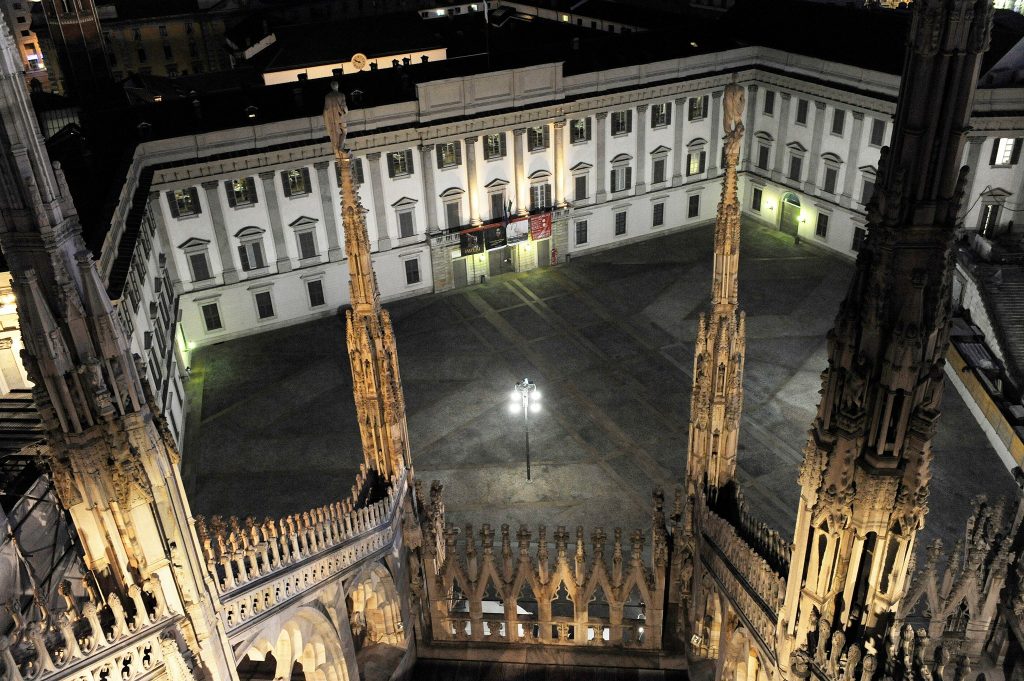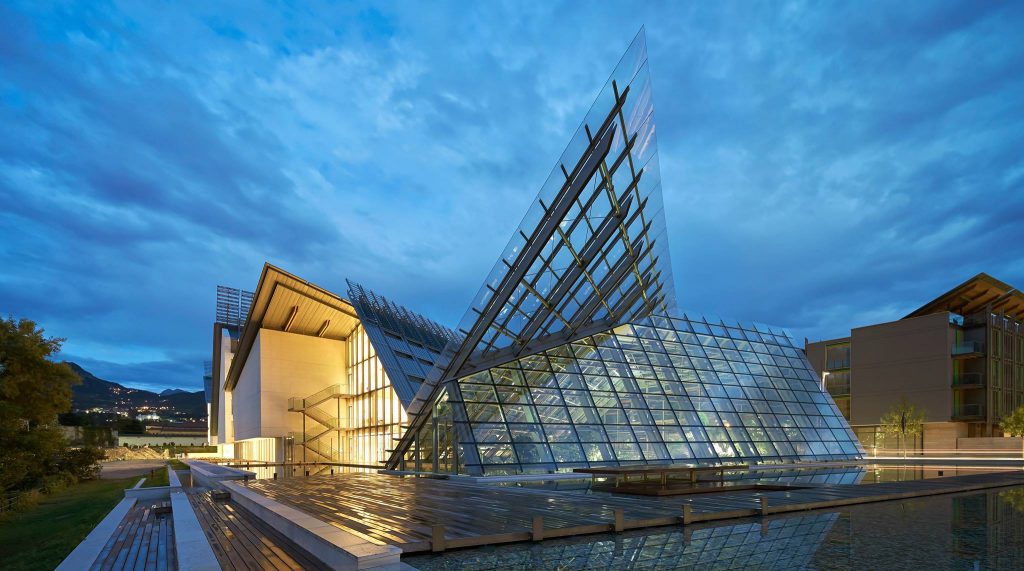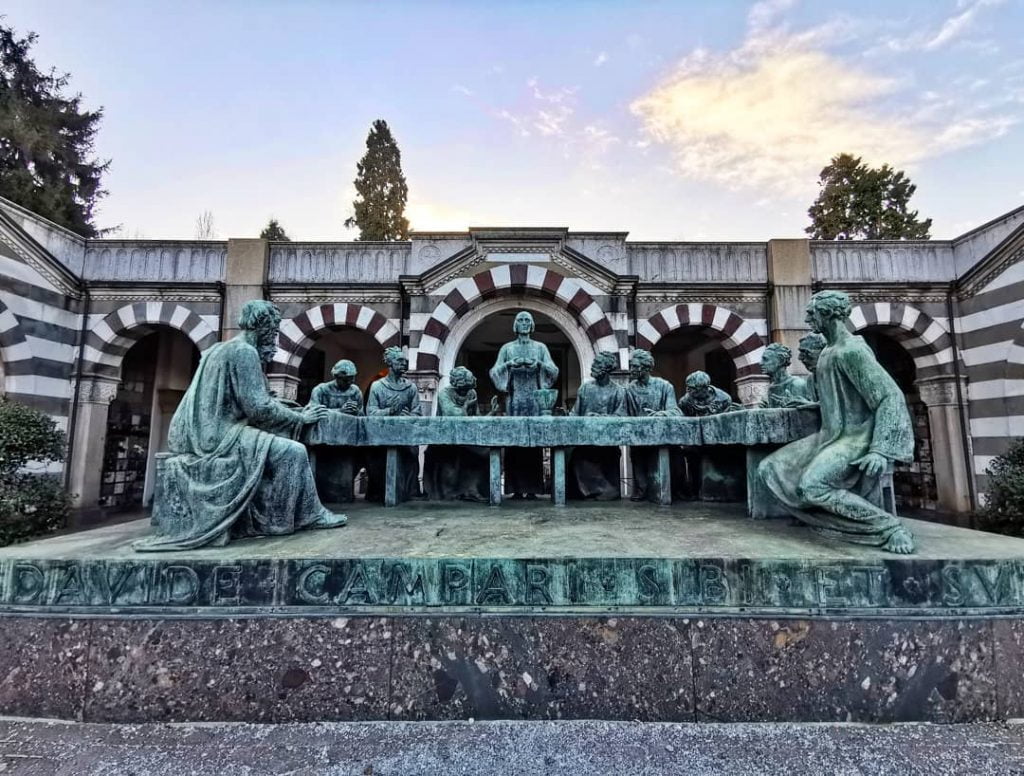The 16 Best Things to Do in Milan, Italy
When you think of Milan, the first thing that comes to mind is the capital of fashion and shopping. The city is also famous for being the economic capital of Italy. But there is also a Milan made of art and culture, full of art treasures to discover and events not to be missed. In short, the things to do and see in this city are certainly not few, to which we must add the charm of a great European metropolis.
Milan Cathedral ( Duomo di Milano)

We start the tour of Milan with the most important monument and symbol of the city: the Cathedral (Duomo). It is located in Piazza del Duomo, in the historic center, which is also the best starting point for a visit to the city.
Begun in 1386, the construction of the Milan Cathedral took about 500 years. It was finished at the time of Napoleon Bonaparte, who wanted to be crowned there as king of Italy.
This church is the third largest cathedral in the world, after St. Peter’s Cathedral in Rome and Seville Cathedral.
This majestic structure is the most significant testimony of Gothic architecture. Its facade has 2,000 white marble statues and 136 spiers. On the main spire stands the famous Madonnina, a golden copper statue 4 meters high. Inside there are 5 naves and 52 columns, each of which represents a week of the year. You can also admire the sarcophagi and tombs of several archbishops. Finally, you can also go up (on payment) to the terrace of the Duomo, from which you can enjoy a beautiful panorama. You can get there either by stairs or with elevator.
The Vittorio Emanuele II Gallery

Also, in Piazza del Duomo, you can visit the Galleria Vittorio Emanuele II, another of Milan’s great attractions. The Gallery is considered one of the most beautiful in Europe, with a superb dome made of glass and iron. Inside, you can find some of the most famous fashion designer shops, as well as many luxury restaurants.
La Scala in Milan

From Piazza del Duomo, along the Galleria Vittorio Emanuele, you arrive directly in Piazza della Scala, where the famous Milan Opera House is located.
Together with the San Carlo Theater in Naples and the Fenice in Venice, it is one of the 3 most prestigious opera houses in Italy, although the external facade is quite simple. On the left of the building, you can visit the Scala Museum and its collection of musical instruments, opera costumes, and historical documents.
Sforza Castle (Italian: Castello Sforzesco)
Another symbol of Milan is the Castello Sforzesco, always in the center of the city, reachable by taking Via Dante from Piazza del Duomo. It was built in 1358 by the Visconti family to protect and defend the city. Destroyed and rebuilt several times, it is famous for having hosted Leonardo Da Vinci’s laboratories during the Renaissance period.
Today the castle houses a number of museums: the Museum of Ancient Art, the prehistoric collections of the Archaeological Museum, the Museum of Decorative Arts, the Egyptian Museum, the Pinacoteca (with works of art from the 13th to the 18th century), the Museum of Musical Instruments and the Museum of Ancient Furniture and Wood Sculptures.
The vast internal courtyard of the castle is open to the public free of charge. Cultural events are often hosted here.
Sempione Park (Parco Sempione)
Just behind the Sforzesco Castle is Sempione Park, the green lung of the city, as well as the largest public park in Milan.
Inside there are some buildings of interest, including the Civic Aquarium, the Civic Arena (a multipurpose stadium of 1807, where sporting events are held) and the most famous Arco della Pace, the triumphal arch of Milan, built to celebrate peace.
Church of Santa Maria delle Grazie
Santa Maria delle Grazie is undoubtedly the most famous church in Milan and is known for hosting one of the most beautiful masterpieces ever made, the painting of the Last Supper by Leonardo da Vinci.
Thousands of tourists come here every year to admire this painting.
Leonardo da Vinci’s Last Supper is kept inside the refectory of the Dominican convent of Santa Maria delle Grazie. Leonardo created this work between 1494 and 1498.
Unfortunately, over time, due to environmental conditions and historical events, the work has undergone serious deterioration and can only be partially seen. To avoid the painting can still be damaged, it is kept in particular environmental conditions, determined by the air treatment, and can only be visited by groups of maximum of 25 visitors at a time, every 15 minutes.
Basilica of Sant’Ambrogio
The current basilica, which takes its name from the patron saint of the city, is one of the oldest in Milan and was completed in 1099 in Romanesque style.
The exterior of the church has 2 brick towers and a beautiful atrium. Inside, you can see: the early Christian sarcophagus called Stilicone dating back to the 4th century, and the crypt, where the remains of Sant’Ambrogio, San Gervasio, and San Protasio are located.
Near the Basilica of Sant’Ambrogio, a Roman column stands out.
The National Museum of Science and Technology “Leonardo Da Vinci”
This museum is one of the best tourist attractions in Milan, as it exhibits over thirty models that reconstruct the inventions of Leonardo Da Vinci, ranging from war machines to measuring instruments. On the other floors of the museum, you will also discover themes such as aviation, rail transport, automobile, naval transport, space, communications, and many others.
The Monumental Cemetery
Milan’s Monumental Cemetery is worth a visit because it is a special place. More than a cemetery, it is a huge open-air museum with many artistic tombs.
At the main entrance, you can see the tombs of the most important citizens of the city. The wealthiest families in Milan really competed to stand out, as evidenced by the numerous sculptures of angels or statues.
The Pinacoteca di Brera (“Brera Art Gallery”)

The Pinacoteca di Brera houses one of the most important art collections in Italy. It is located at Palazzo Brera. The Pinacoteca was born in 1776 as a collection of significant works intended for the training of the students of the Academy of Fine Arts. Here, among the most famous masterpieces, you can admire “The Marriage of the Virgin” by Raphael or “La Cena in Emmaus” by Caravaggio. One of the symbols of Brera is the picture of Romanticism par excellence: the Kiss by Hayez. The collection goes back to the 1900s with works by Braque, Modigliani, Picasso, Morandi, De Chirico, and many others.
Royal Palace of Milan

The Royal Palace of Milan is an important cultural center of the city. A series of exhibitions are organized every year, both modern and contemporary art, fashion or design.
You can also visit the palace museum. It presents both its own history and that of the city and population of Milan, from the Neoclassical period to the Napoleonic and Risorgimento periods.
Navigli, The Waterways of Milan
The Navigli district, crossed by canals, is one of the most picturesque attractions in Milan. Originally, this canal system connected the Po River to the lakes of the region. They were also used to transport goods and supply Milan with water. The system of dams and locks used was invented by Leonardo da Vinci.
Today, you can go to the Navigli district and stroll peacefully along the canals among the numerous bars and restaurants.
Shopping in Milan

The city is internationally recognized as the capital of fashion and design. The Fashion District is made up of 4 streets: Via Montenapoleone, Via della Spiga, Via Sant’Andrea and Via Manzoni. Here you will find the boutiques of great Italian designers such as Versace and Gucci. This is also the place where Milan Fashion Week takes place.
Piazza Affari
If you have some time during your trip to Milan, go in front of the Milan Stock Exchange headquarters in Piazza Affari (Business Square) to admire a rather unique monument: an 11-meter marble statue representing a giant middle finger. Call L.O.V.E. (Freedom, Hate, Vendetta, Eternity); the statue was created by the Italian sculptor Maurizio Cattelan as a sign of ridicule towards the financial institution.
What to eat in Milan

Milan boasts a great culinary tradition. The best-known first course is undoubtedly the Milanese risotto, made with saffron. Among the other dishes, the most famous and appreciated is the Milanese cutlet, which according to tradition, is made with veal, at least a finger high, and fried in butter or olive oil. Let’s not forget the “Ossobuco”: sliced veal shank o the “poor” parts of the pig. The cheeses are instead among the typical products of the r stewed beef. The “cassoeula” instead is a very rich dish made with cabbage andarea: stracchino, mascarpone, grana, and, of course, gorgonzola. Moving on to desserts, the most famous is undoubtedly the “panettone.” The panettone in Milan is not a simple tradition; it is the characteristic dessert par excellence, soft and produced only with top-quality ingredients. The artisan panettone is a symbol of the Christmas holidays but also of the Milanese pastry tradition. This Christmas specialty was born in Lombardy in the late XIX century and spread in the current form and recipe in the early XX century.
Read also:
Where to stay in Milan
Given the large influx of people, Milan has numerous hotels, bed & breakfasts, apartments, and hostels scattered throughout every part of the city. Next to the large and luxurious hotel chains, you will also find more modest and welcoming hotels, comfortable guest houses and family bed & breakfasts. It is not easy to find a room at a good price, especially in the center and on the occasion of international events. But all the accommodations are perfectly connected to the center of Milan, thanks to an efficient and functional transport system, so if you want to save a little, you can choose to sleep in the suburbs, without the problem of travel.














